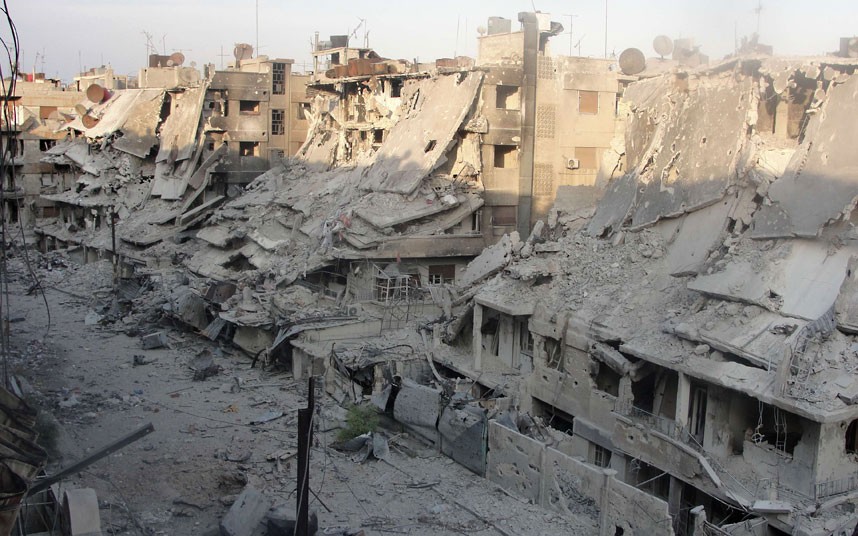Arab News
The plan for “de-escalation zones” in Syria is not bad at all, but the devil is in the detail. Years ago, when the idea of allocating areas for those fleeing the bombing and war was raised, it was quickly opposed by the Syrian regime, Iran and Russia. Former US President Barack Obama helped them by claiming it was impractical.
Damascus, Tehran and Moscow have continued to destroy cities to inflate the number of refugees and export the problem abroad. That number has reached record levels, with about 2.5 million Syrian refugees in Lebanon and Jordan. Similar numbers have fled to Turkey.
In one year, a million Syrian refugees fled to Europe via Turkey, the scale of which the continent has not seen since World War II. Infiltration by terrorist organizations and regime intelligence has made the world afraid of Syrian refugees. Europeans have pressed for havens for refugees inside Syria, but Russia rejected the idea. Syrian President Bashar Assad’s allies considered these havens an opposition ploy to establish independent cantons.
The regime has continued airstrikes to displace millions from cities with large populations. In Aleppo, the largest Syrian city, only a small percentage of the population remains. After the closure of all borders, there are now about 7 million displaced people in Syria and 5 million refugees abroad, the largest numbers in modern history.
President Donald Trump has changed US policy toward the conflict in Syria. His government includes generals who have worked in the region and know the realities on the ground. The Trump administration punished the Assad regime and its allies by striking Shayrat air base near Homs, signaling a new policy and demanding safe zones.
This idea dates back three years, but surprisingly it was implemented in less than a week of the date of its announcement. It is supported by the relevant powers — the US, Russia, Turkey, the Gulf states and Jordan — and strongly opposed by Iran and the Assad regime.
The creation of safe zones means people’s fate is no longer at the mercy of Damascus, Tehran and Moscow. The havens halt the project of exporting refugees that threatens the stability of Jordan, Turkey, Lebanon and Europe.
Nonetheless, the plan is good. The creation of safe zones means people’s fate is no longer at the mercy of Damascus, Tehran and Moscow. The havens halt the project of exporting refugees that threatens the stability of Jordan, Turkey, Lebanon and Europe.
They also halt the process of demographic change that Iran and Assad are devising by rearranging regions in a sectarian way, controlling strategic areas and adopting a geographic passage linking the new colonies of Iran to Iraq, Syria and Lebanon. The havens will give the Syrian civilian opposition the opportunity for the first time to work politically on the ground.
But the havens have potential risks. They have divided the Syrian map politically. The US has been given areas of interest to the security of its allies, including territories bordering Jordan, Israel and the Kurds. Moscow has been given areas adjacent to Lebanon and others inhabited by minorities, which house Russian military bases. Turkey has been entrusted with the adjacent area.
One potential risk is terrorist groups infiltrating the havens and recruiting from their populations. It will not be easy to secure the living and security needs of crowded areas, which could make it difficult to control them and may lead to infighting. Without a political solution or decisive military victory, heavens will become like concentration camps for millions of people.
Despite these dangers, there remains a need to stop the humanitarian tragedy and rid millions of innocent people of the regime and its allies. This move has annulled the two-month-old solution that granted the regime the upper hand by the power of international recognition, and will push everyone to seek a reasonable alternative solution.

